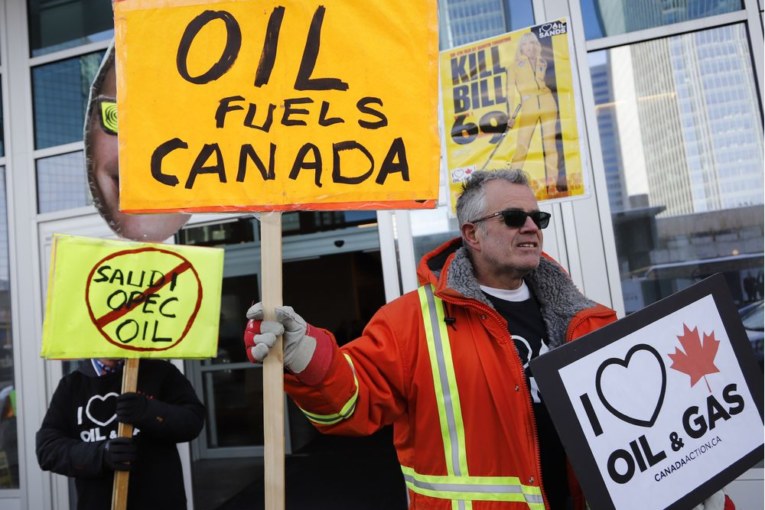
When the National Energy Board first approved the Trans Mountain pipeline expansion in 2016, Alberta’s energy minister equated it to a baseball batter getting a hit, putting a runner into scoring position.
However, a federal court ruling last August put the project into limbo, the baseball equivalent of seeing the runner get tagged out after stepping off second base.
On Friday, the NEB issued another positive ruling that could put the long-delayed development back into play.
But I wouldn’t bet on it just yet.
If there’s one lesson to learn in the world of Canadian pipeline politics, it’s that the regulator’s word isn’t the final one.
It’s the last legal decision that matters most.
For the country’s beleaguered energy sector, what matters most today is that pipe is actually put into the ground, not that another hurdle has been cleared.
“You’ve got to see oil flowing through the pipeline,” said Brian Schmidt, CEO of Tamarack Valley Energy.
“I’m not jumping for joy. It’s significant, but we need to see a little bit more (progress) before I could go to my investors and say, ‘Canada is open for business now.’ ”
Such skepticism permeates Canada’s oilpatch today.
A morass of regulatory and legal failures, from the demise of Northern Gateway and Energy East to the incessant troubles with the Trans Mountain expansion (TMX), cloud any lasting optimism.
As the Canadian Association of Oilwell Drilling Contractors (CAODC) said after Friday’s ruling, the group “is not optimistic it is meaningful, due to the project’s history of delays.”
For the second time since May 2016, the NEB recommended the Trans Mountain expansion is in the country’s interest and should be approved, subject to 156 conditions and a series of 16 new recommendations.
The pipeline moves crude oil and refined products from the Edmonton area to the lower B.C. mainland. The expansion would almost triple its capacity, while increasing marine traffic from five to 34 tankers a month off the West Coast.
The federally owned project is seen as a vital economic lifeline for the industry, necessary to get additional crude to market to unlock better prices for producers.
The expansion was derailed last August after the federal Court of Appeal quashed the Trudeau government’s approval to expand the 66-year-old pipeline.
At the time, the court cited inadequate government consultation with Indigenous communities and the NEB’s improper consideration of the project’s impact on increased marine traffic.
Ottawa is now conducting another round of consultations with First Nations communities, while it ordered the regulator last fall to reconsider the issue of increased tanker traffic.
The regulator concluded that increased shipping is likely to cause “significant adverse environmental effects” on the Southern resident killer whales in the Salish Sea, and on Indigenous cultural use tied to the whale population.
However, it also found the impact can be mitigated and justified, “in light of the considerable benefits of the project.”
Those benefits include increased market access for Canadian oil, more jobs and investment, the development of Indigenous communities and businesses, and significant tax and royalty revenue flowing to various levels of government.
And it’s worth pointing out a recommendation the federal government examine the long-term regional cumulative effects on the Salish Sea could actually improve the current situation, if steps are taken to remedy it.
Canadian Association of Petroleum Producers president Tim McMillan said the decision was significant as it would have been difficult for Trans Mountain to survive a negative ruling.
“It almost seems like we’re in a world with instant replay, where the umpire just spent the last 155 days reviewing the tape to make sure that we were safe in scoring position,” said McMillan.
“They’ve now come back to say ‘yup, you are safe.’ ”
The federal cabinet will review the report and has 90 days to respond, although it could take longer.
Federal Resources Minister Amarjeet Sohi said he hopes the report is “putting us in a strong position to make a decision” within the 90-day time frame, but wouldn’t commit to a firm deadline.
“Our goal is to move forward on this project in the right way,” he said. “Whenever you cut corners on the process, you get into trouble.”
There’s plenty of evidence to prove the point. But it’s up to Ottawa to get it right.
“The ball is now in the federal court,” said Chris Bloomer of the Canadian Energy Pipeline Association.
“But until the oil is flowing, we ain’t got a pipeline.”
It’s been a long and tortuous route for the Trans Mountain expansion.
( function() { pnLoadVideo( “videos”, “zui2KAz5nfA”, “pn_video_991634”, “”, “”, {“controls”:1,”autoplay”:0,”is_mobile”:””} ); } )();
The project proponent Kinder Morgan first applied for NEB approval in 2013, with expectations oil would begin flowing by the end of 2019.
Despite the Trudeau government giving it the green light in 2016, Trans Mountain has been under constant fire from critics — including B.C. Premier John Horgan — as well as environmental groups and some First Nations.
Given the growing uncertainty around the project’s future, Kinder Morgan sold the development to Ottawa last year for $4.5 billion. Construction briefly began last summer, until the surprising court ruling.
Premier Rachel Notley is optimistic shovels will get back into the ground by the fall, if the federal government approves the project once the consultations with First Nations wrap up.
But you can forgive Albertans and the oilpatch for remaining skeptical about the timing.
After all, it’s been 1,010 days since the same project was backed by the same regulator to be in the country’s public interest.
Here we are today, still waiting to see pipe put into the ground.
“We’re in a zero-zero ball game in the 26th inning and the damage to the Canadian economy is being done,” concluded McMillan.
“The fans are tired and grouchy.”
Chris Varcoe is a Calgary Herald columnist.
You can read more of the news on source
